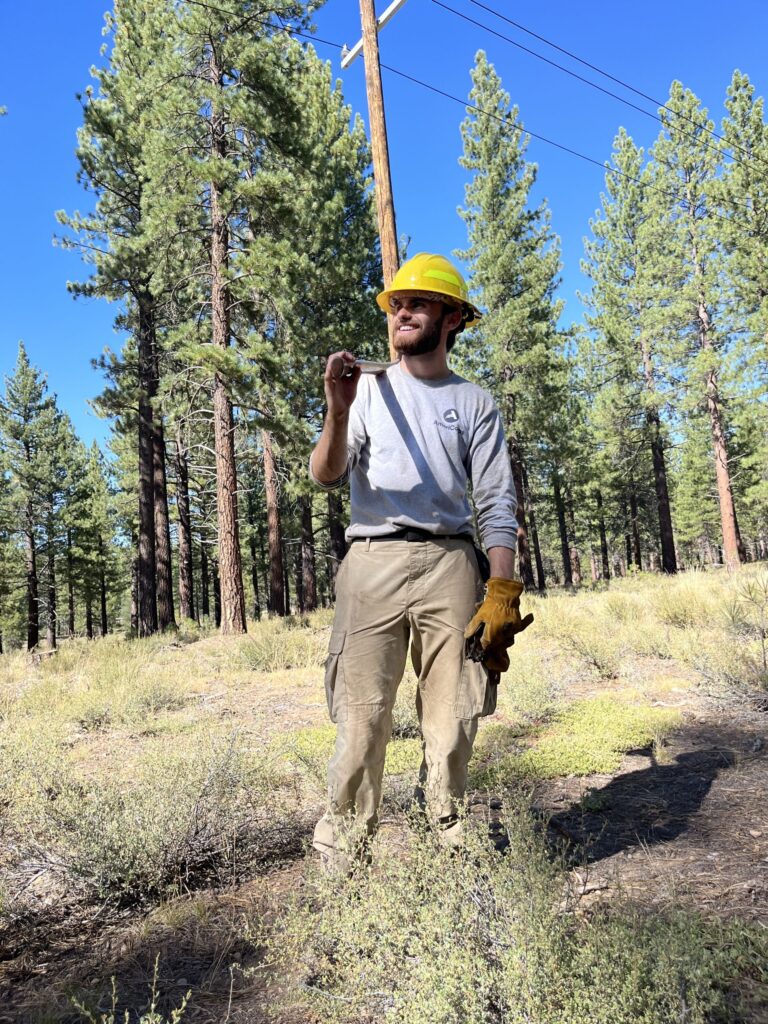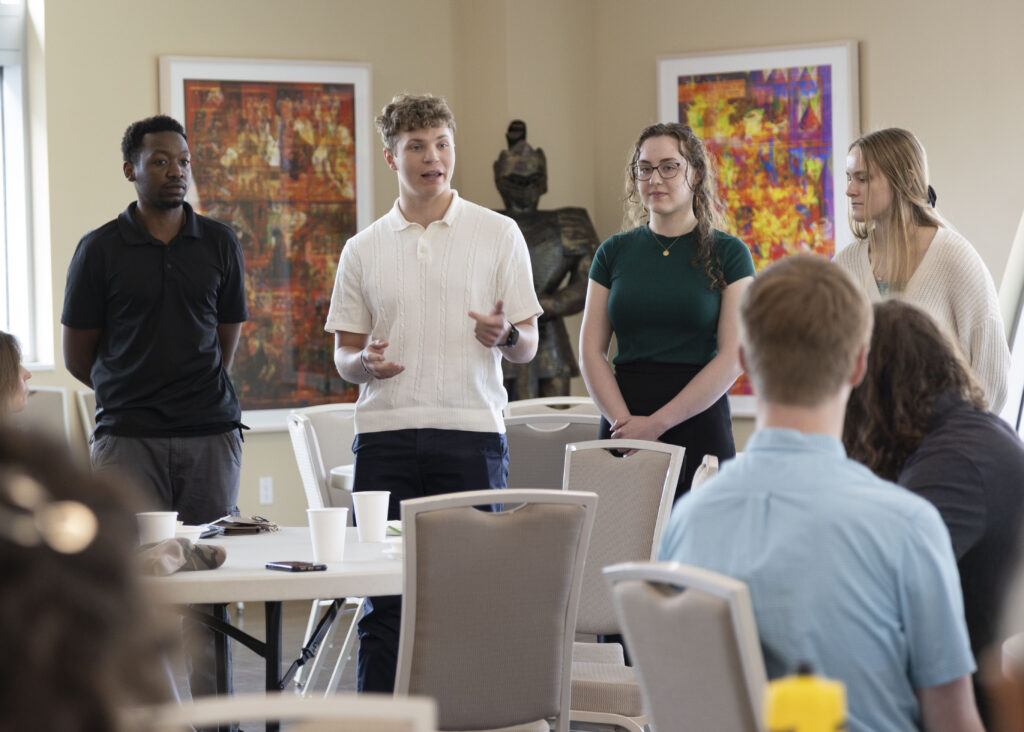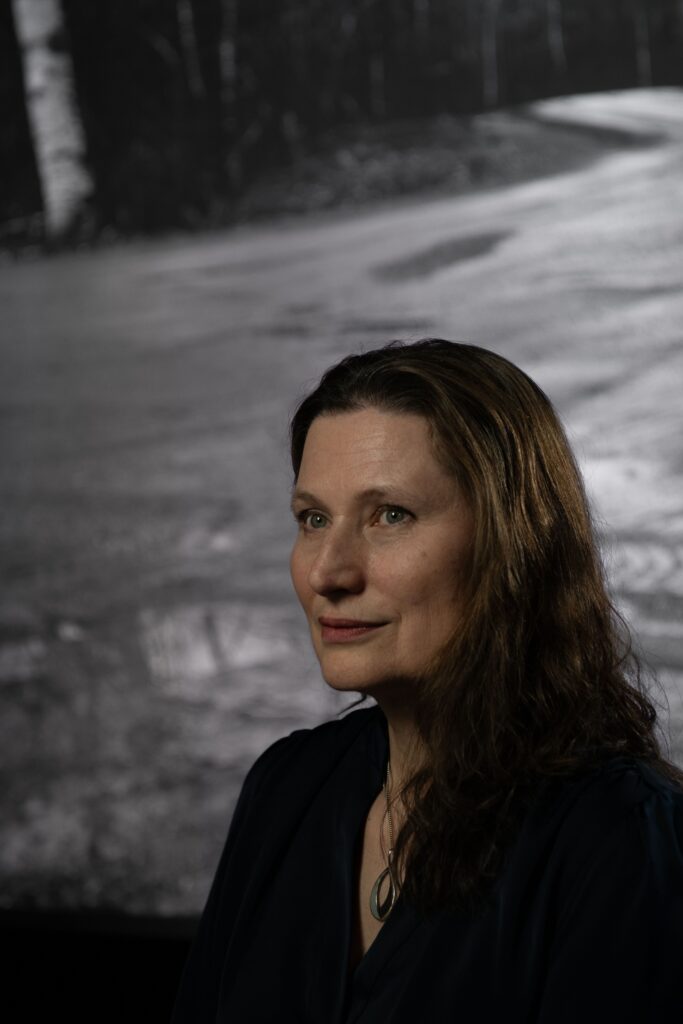Wall Lecturer Sarna takes stock of U.S. antisemitism
Brandeis professor and well-known author says hate rising in U.S.; he warns against complacency or complicity but urges avoidance of extreme comparisons to Nazi Germany.
As Brandeis University Professor Jonathan Sarna was on his home campus preparing to deliver Wednesday’s Rabbi Max Wall Lecture at Saint Michael’s College on the topic of antisemitism in America, one of his students alerted the prominent author and scholar that Sarna’s photo appears alongside foul postings of hate and antisemitism on a white supremacist website.

Professor Jonathan Sarna of Brandeis University delivers the annual Rabbi Max Wall Lecture in the Roy Room of Dion Family Student Center Wednesday afternoon. (photos by Megan Schneider)
Though not many years ago, he said, “I would have shrugged – who cares about a few crazies? – today, after Pittsburgh [site of a synagogue massacre] and so many other antisemitic incidents, closing my eyes and just moving along didn’t seem like the right response.” He was addressing more than 100 people in his Dion Family Student Center Roy Room audience of students, faculty, Edmundites and many members of the local surrounding Jewish community.
“Nothing has prepared folks to expect that Jews in America would once again be targeted as Jews,” he said, opening his talk by describing what he found on that white supremacist website in disturbing detail. It provided his listeners a window into ways technology is making it so much easier to disseminate hate to vast numbers of people than in past eras.
Sarna said that while few if any of the posts targeting Jews that he read contained anything new to history, the multiple threads were as horrific as ever with coarse or violent references to conspiracy theories and age-old virulent prejudices, using such coded or explicit words as “The Problem” and “The Solution” and “counter extermination,” with one of 80-plus threads showing 121,000 views.
The speaker’s central message was the importance of avoiding “two extremes”: the first, against “those who darkly warn that catastrophe looms, that we’re reliving what Jews experienced in Germany in the 1930s.” The distinction, he said, is that under the Nazis, Jews suffered “from state-sponsored antisemitism that forced them to choose between exile and death,” and “nothing remotely similar is currently taking place in the U.S.” That’s why he feels that “comparisons to Nazi Germany are not quite on target.” But he cautioned that we must also be wary of another extreme—the notion that there actually is “nothing much to worry about.”

Audience members listen intently.
“It is hatred generally that’s rising alarmingly in the U.S. in recent years,” he said. “I think it is an issue of great concern to Americans generally, not just to Jews.” His talk aimed to “sketch a middle ground” between the two extremes. He shared statistics showing a dramatic rise in antisemitic incidents across the U.S., including that assaults have doubled since 2015. Particularly distressing is that many attacks or incidents have taken place at educational institutions, he said, indicating that these are views students likely are bringing from home.
Another major point he emphasized was that electronic media have greatly contributed to the rise of antisemitic activity in our day, since “social media and the internet make it possible to cloak hateful messages in a cloud of anonymity” while extending the reach of hate-filled messages to tens of thousands. He reviewed statistics driving home the point.

Jonathan Sarna gestures forcefully during his talk.
Sarna spent some time going through the history of antisemitism in America starting with Dutch settlers in New York in the 1600s, to demonstrate that it is nothing new, though prejudice has not been singular to Jews or always worse than that targeting other groups either. He said blacks, Catholics, Mormons and other groups had similar experiences throughout U.S. history, and he described some terrible and largely unknown hate attacks against those groups across generations. He told how Ulysses Grant took very strong antisemitic measures after the Civil War, but Abraham Lincoln forcefully countered Grant’s views and actions. Pre-World War II years were particularly difficult for American Jews in facing overt societal discrimination in areas like housing, college admissions or social memberships, but after World War II, Americans “tried to distinguish themselves from Nazis” and incidents targeting Jews dropped precipitously, often under pressure from returning veterans who had seen concentration camps (one of those was the heroic Army veteran Rabbi Wall, he noted at one point). That started what seemed at the time like a “golden age” of several decades in U.S. society, he said, and many wrongly thought “antisemitism might be largely behind us in America.”

Among Saint Michael’s people in the lecture’s front-row audience were, from left, religious studies Professor Ray Patterson, VPAA Jeffrey Trumbower, and longtime and now retired PR director Buff Lindau.
However, he said, in America, Jews have been able to fight back against antisemitism quite freely since “Jews received their rights along with everyone else” in the evolution of the law and understanding of the Constitution. He said neither Jews nor any other group has ever “borne the full brunt of national odium” because of the pluralistic nature of society and its hatreds compared with Europe. “Antisemitism is in many ways more foreign to American ideals than to European ones,” he said. America’s tradition of religious freedom and diversity and church-state division militates against the ‘us-versus-them’ mentality that is more widespread in Europe. Also, he said, the two-party system means that neither party can afford to alienate large blocs of voters, including Jews, since elections are always so close.
“So our job is not to minimize or to maximize antisemitism but rather to view it realistically. Above all, we cannot remain complacent in the face of a rising tide of hatred, and we must not in any way be complicit in its spread,” Sarna said, adding that it made him happy to hear Saint Michael’s had just had a Day of Learning on topics related to racism and prejudice the day before his visit.
Sarna explained during a later question session that he does not use the widely seen hyphenated rendition of the word “antisemitism” since that is based on a flawed and artificial racial construct from the late 1800s assuming there is such a thing as “Semitism.”

A full house heard the Wall Lecture in the Roy Room.
Introducing Sarna was Jeffrey Trumbower, Saint Michael’s vice president for academic affairs and professor of religious studies. The introduction told parts of the speaker’s impressive biography: that as an author, Sarna is best known for the acclaimed American Judaism: A History, recently published in a second edition. Winner of the Jewish Book Council’s “Jewish Book of the Year Award” in 2004, it has been praised as being “the single best description of American Judaism during its 350 years on American soil.” The speaker was dubbed by the Forward newspaper in 2004 as one of America’s 50 most influential American Jews. He is University Professor and the Joseph H. & Belle R. Braun Professor of American Jewish History and Director of the Schusterman Center for Israel Studies at Brandeis University near Boston. He is also past president of the Association for Jewish Studies and Chief Historian of the National Museum of American Jewish History in Philadelphia. He was Chief Historian for the 350th commemoration of the American Jewish community and is in 2009, he was elected to the American Academy of Arts and Sciences. He holds four honorary degrees.
This annual Rabbi Wall Lecture at Saint Michael’s honors the memory of Rabbi Max Wall (1915-2009), long-time rabbi of Burlington’s Ohavi Zedek synagogue, and part-time professor at Saint Michael’s College. Besides being the spiritual leader at Ohavi Zedek for decades, Rabbi Wall took ground-breaking initiative in the early 1960s to forge a lasting relationship with Saint Michael’s College, including teaching courses, initiating a Judaica collection in the library and establishing this lecture series.
Rabbi Wall’s daughters were present at Wednesday’s lecture, and Sarna made a warm connection with them by telling of a close friendship between their uncle, Rabbi Wall’s brother, Cantor Isaac Wall, and the speaker and his parents.

A sign in the Roy Room describes the program for the Rabbi Max Wall lecture.





